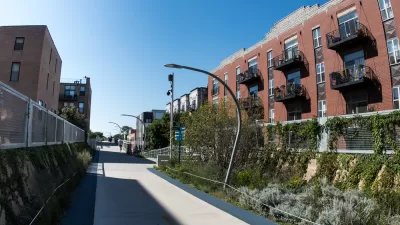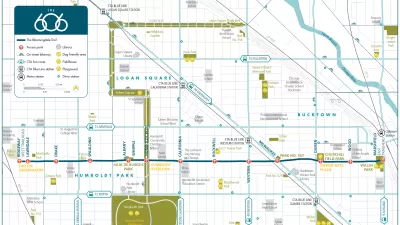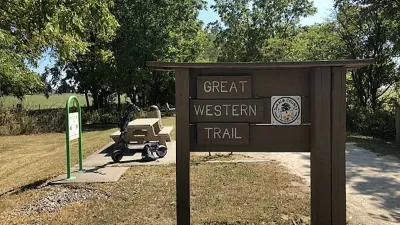Because the rails to trails project left housing up to the market, rising rents were inevitable, claims a new report.

Logan Square rents and property values have been on the rise, particularly in the part of the neighborhood around the 606. Whether or not the trail and its planners deserved any of the blame for that has been a subject of debate in the area for some time. A new report argues that it was a cause of rising costs and its were to blame. “Lower-cost housing was bound to be pushed out of neighborhoods along the 606 trail by more expensive replacements because of the way the rails-to-trails project was planned, a pair of academics claim in a scholarly journal,” Dennis Rodkin reports in Crain’s Chicago Business.
University of Illinois Professor Alessandro Rigolon contends that the project’s builders were content to see it as a purely parks and infrastructure venture and to leave housing prices to ride the market. Rigolon and his co-author, Professor Jeremy Nemeth of the University of Colorado, even titled the piece after a quote from a representative for the Trust for Public Land that did much of the work on the project who said, “We're not in the business of housing.”
Critics of the report (from the Trust for Public Land and elsewhere) point out that the neighborhood was already gentrifying and that some of the rising land value came from the neighborhood recovering from the great recession. Useful context to be sure, but not enough to convince observers that the trail didn’t force out residents.
FULL STORY: Was gentrification around the 606 inevitable?

Alabama: Trump Terminates Settlements for Black Communities Harmed By Raw Sewage
Trump deemed the landmark civil rights agreement “illegal DEI and environmental justice policy.”

Planetizen Federal Action Tracker
A weekly monitor of how Trump’s orders and actions are impacting planners and planning in America.

The 120 Year Old Tiny Home Villages That Sheltered San Francisco’s Earthquake Refugees
More than a century ago, San Francisco mobilized to house thousands of residents displaced by the 1906 earthquake. Could their strategy offer a model for the present?

Ken Jennings Launches Transit Web Series
The Jeopardy champ wants you to ride public transit.

BLM To Rescind Public Lands Rule
The change will downgrade conservation, once again putting federal land at risk for mining and other extractive uses.

Indy Neighborhood Group Builds Temporary Multi-Use Path
Community members, aided in part by funding from the city, repurposed a vehicle lane to create a protected bike and pedestrian path for the summer season.
Urban Design for Planners 1: Software Tools
This six-course series explores essential urban design concepts using open source software and equips planners with the tools they need to participate fully in the urban design process.
Planning for Universal Design
Learn the tools for implementing Universal Design in planning regulations.
Clanton & Associates, Inc.
Jessamine County Fiscal Court
Institute for Housing and Urban Development Studies (IHS)
City of Grandview
Harvard GSD Executive Education
Toledo-Lucas County Plan Commissions
Salt Lake City
NYU Wagner Graduate School of Public Service





























